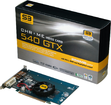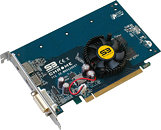
Asahi Linux Gets Fedora 41 Remix with New Desktop Environment Options and AAA Windows Gaming For Mac Silicon
In October, we reported that Asahi Linux had made some pretty substantial progress in getting Linux working on Apple Silicon, with a custom GPU driver counting itself as the first OpenGL 3.0 compliant graphics driver for Apple Silicon. Now, according to a recent Fedora Magazine post, Asahi Linux now has a Fedora 41 Remix. The Fedora Asahi 41 Remix is still based on that same Asahi version from October 10, but it incorporates the myriad advancements from Fedora 41 and an improved Vulkan 1.4-conformant driver.
By default, Fedora Asahi Remix 41 ships with Plasma 6.2, although a GNOME 47 version is also available. However, despite using a Wayland-first dekstop environment as its default, Fedora Asahi 41 Remix will still be X11-first, for compatibility reasons. The Asahi team plans on getting Wayland working eventually, but there are technical hurdles to overcome before that is possible. Fedora Asahi Remix also ships by default with the improved DNF 5 package manager and the massively improved GIMP 3.0 image editor pre-installed as part of Plasma 6.2. Having a Fedora Remix for Asahi also provides a familiar experience for gamers on Apple Silicon Macs to get Windows games up and running via a mix of tools like Valve's Proton dxvk, FEX emulator, and vk3d-proton—check out our previous coverage of Asahi to find out more about which games are currently working. There are still a handful of hiccups when it comes to running Linux on Apple Silicon, including hardware incompatibilities, like a lack of Thunderbolt, microphone, Touch ID, and USB-C Display support.
By default, Fedora Asahi Remix 41 ships with Plasma 6.2, although a GNOME 47 version is also available. However, despite using a Wayland-first dekstop environment as its default, Fedora Asahi 41 Remix will still be X11-first, for compatibility reasons. The Asahi team plans on getting Wayland working eventually, but there are technical hurdles to overcome before that is possible. Fedora Asahi Remix also ships by default with the improved DNF 5 package manager and the massively improved GIMP 3.0 image editor pre-installed as part of Plasma 6.2. Having a Fedora Remix for Asahi also provides a familiar experience for gamers on Apple Silicon Macs to get Windows games up and running via a mix of tools like Valve's Proton dxvk, FEX emulator, and vk3d-proton—check out our previous coverage of Asahi to find out more about which games are currently working. There are still a handful of hiccups when it comes to running Linux on Apple Silicon, including hardware incompatibilities, like a lack of Thunderbolt, microphone, Touch ID, and USB-C Display support.






